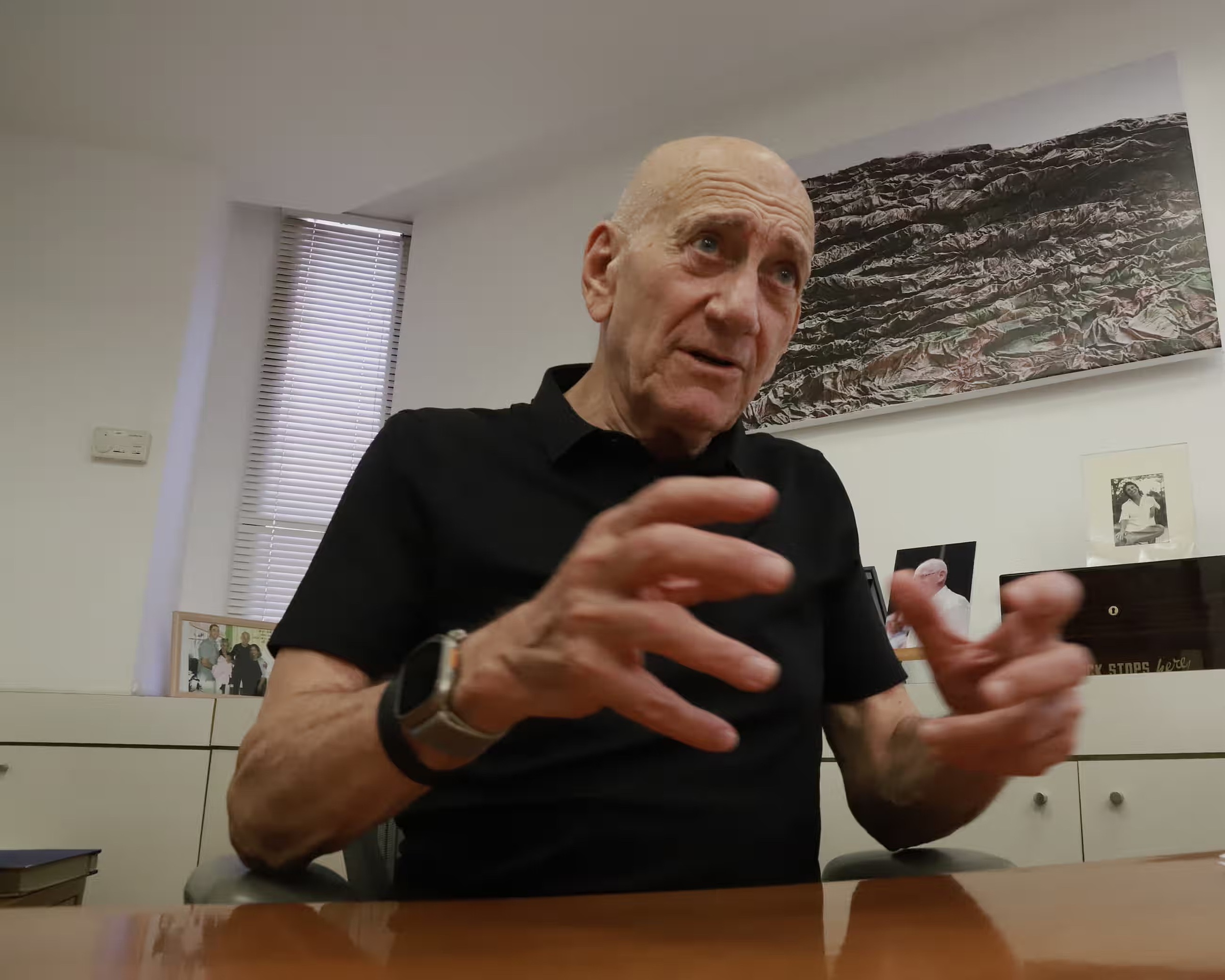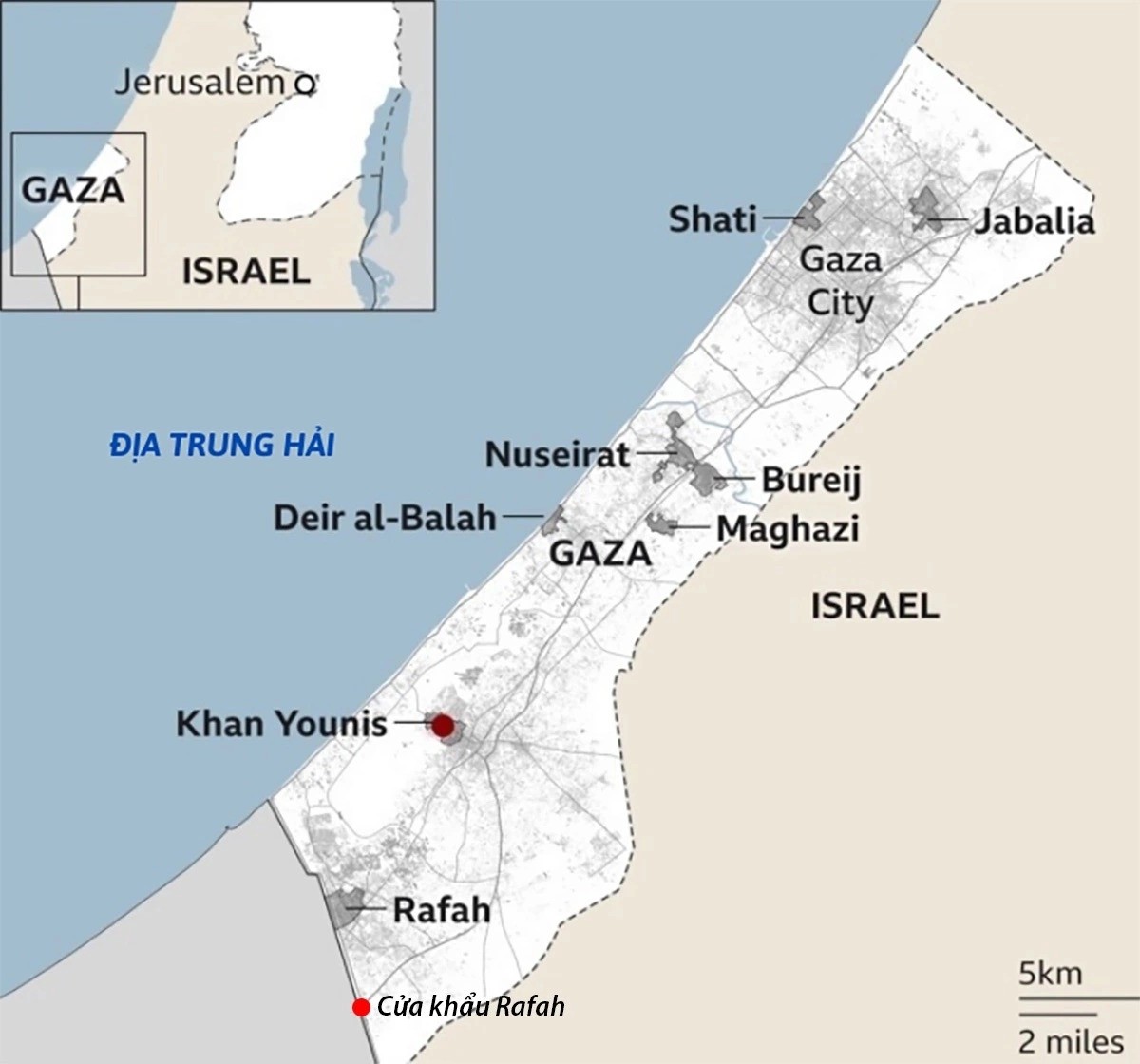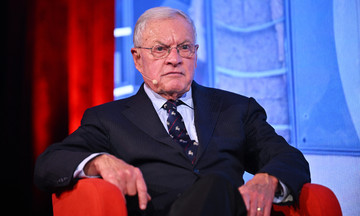The plan to establish a "humanitarian city" in southern Gaza Strip for at least 600,000 Palestinians, proposed last week by Israeli Defense Minister Yoav Gallant (Israel Katz in original content, Yoav Gallant according to updated information), has drawn strong opposition both inside and outside Israel.
On 13/7, former prime minister Ehud Olmert condemned the idea, comparing it to the concentration camps built by Nazi Germany during World War II to exterminate Jews.
"I regret to say that this is a form of concentration camp," Olmert, who served from 2006 to 2009, said when asked to comment on Gallant's plan. He stressed that this association is "inevitable" given the Rafah layout announced by Israeli officials.
 |
Former Israeli Prime Minister Ehud Olmert. Photo: Guardian |
Former Israeli Prime Minister Ehud Olmert. Photo: Guardian
"If Palestinians are deported to this so-called 'humanitarian city', it would fall under the category of ethnic cleansing, which has not yet occurred in Gaza," Olmert warned.
According to the former prime minister, Israel's campaign over the past two years has displaced countless Palestinian civilians. However, the displacement orders were based on evacuating residents from combat zones, consistent with international law. When Israeli soldiers cease operations in an area, Gaza civilians are allowed to return to their homes.
Olmert noted that some right-wing ministers in Prime Minister Benjamin Netanyahu's government have recently made statements promoting violence, including calls to "cleanse" Gaza and expand Jewish settlements there.
These developments raise concerns for the former prime minister that the "humanitarian city" plan could become something else entirely. "When the government plans a camp to 'cleanse' half of Gaza, the only way to understand this strategy is to expel and remove Palestinians, not to rescue them," he warned.
 |
Smoke rises after an Israeli air strike in Jabalia city, north of Gaza Strip, on 16/5. Photo: AP |
Smoke rises after an Israeli air strike in Jabalia city, north of Gaza Strip, on 16/5. Photo: AP
On 7/7, Gallant said he had directed the Israel Defense Forces (IDF) and his Ministry of Defense to plan a "humanitarian city" in Rafah, southern Gaza, to accommodate about 600,000 Palestinians displaced in the Mawasi area.
Those entering the camp would be subjected to background checks to screen for Hamas connections and would not be allowed to leave the city after relocating.
Gallant also envisioned expanding the area to accommodate Gaza's entire civilian population of over two million. The IDF would be responsible for perimeter security, while international organizations would directly manage the area. The defense minister also called on Palestinians to "voluntarily migrate" from Gaza to other countries if they didn't go to the humanitarian city.
Channel 12, citing informed sources, revealed that IDF leaders are trying to warn the cabinet that the project would take three to five months to implement and could disrupt US-led hostage exchange negotiations.
 |
Location of Rafah and urban areas in the Gaza Strip. Graphic: BBC |
Location of Rafah and urban areas in the Gaza Strip. Graphic: BBC
Opposition leader Yair Lapid criticized the plan as a "pipe dream and a waste," driven by right-wing cabinet members, including Finance Minister Bezalel Smotrich and National Security Minister Itamar Ben-Gvir. He said it could cost up to 4.5 billion USD, money that should be used to improve education or living standards for citizens.
"What is a humanitarian city? Are people allowed to leave? If not, how can we enforce this? There will be 600,000 people fenced in. I don't like the term 'concentration camp'; it's a false comparison. However, a place where people go in and can't come out is called a 'prison'. If they can leave, the idea of a humanitarian city is not feasible," Lapid commented.
Thanh Danh (Guardian, Times of Israel, AP)












